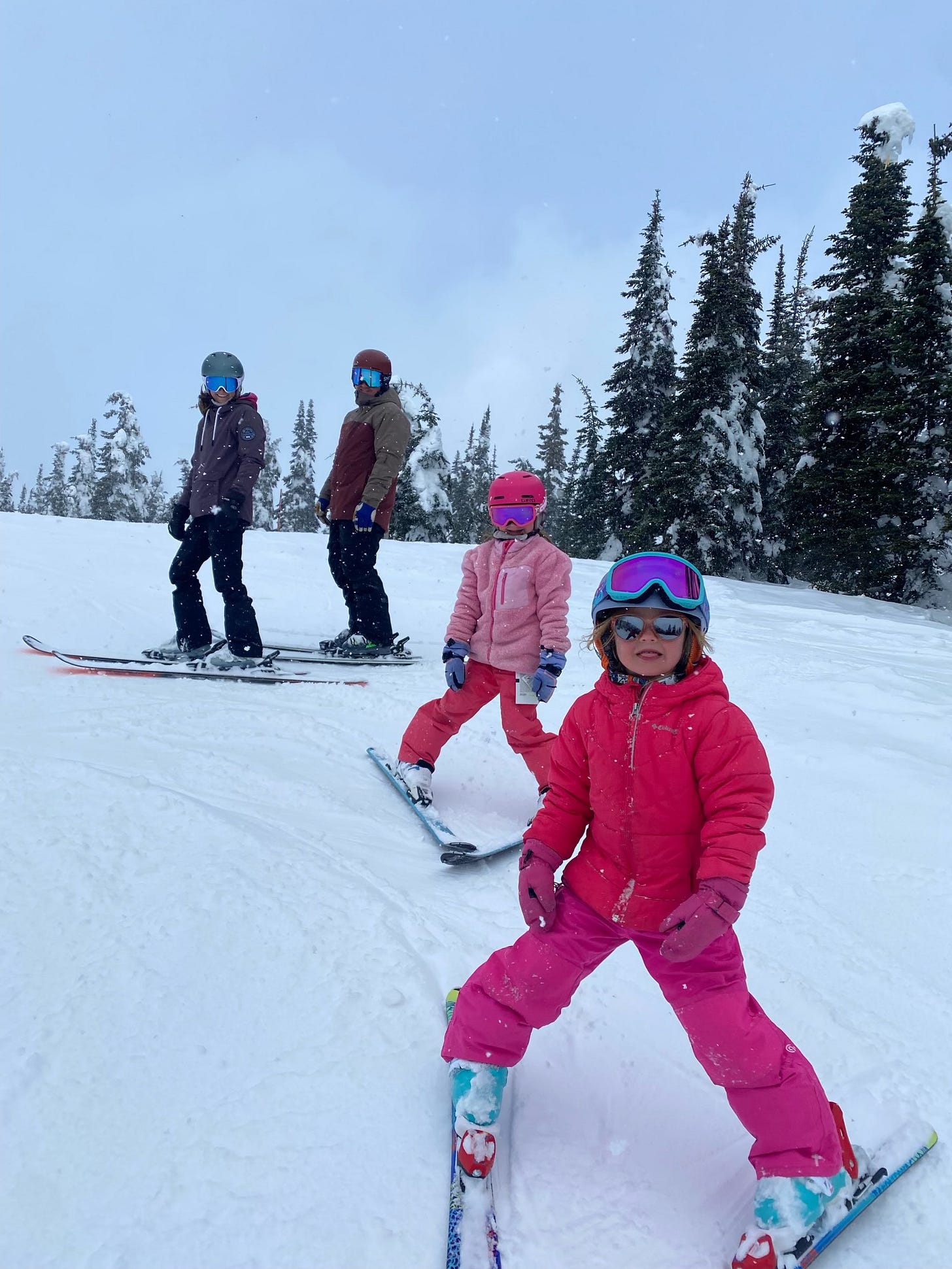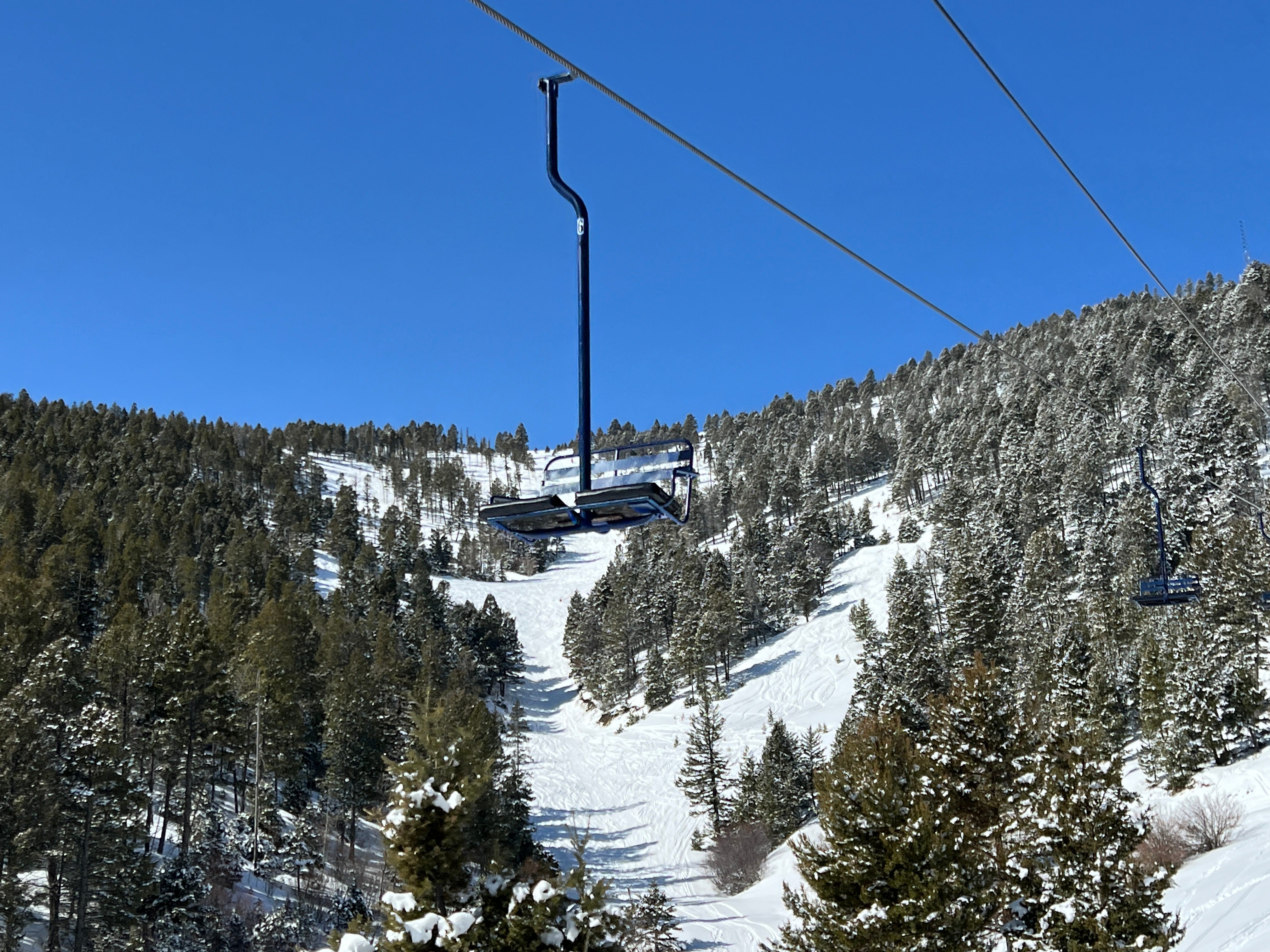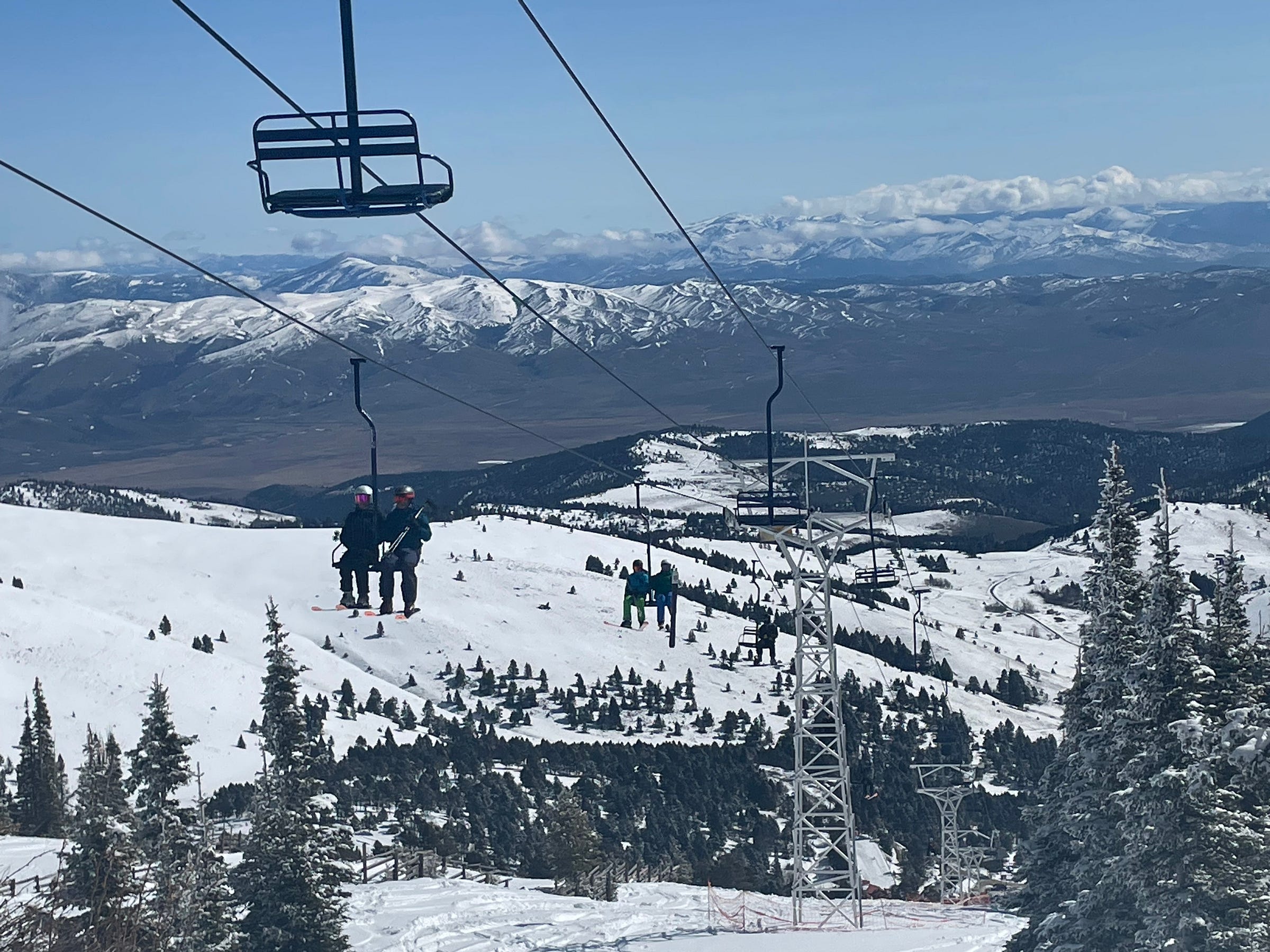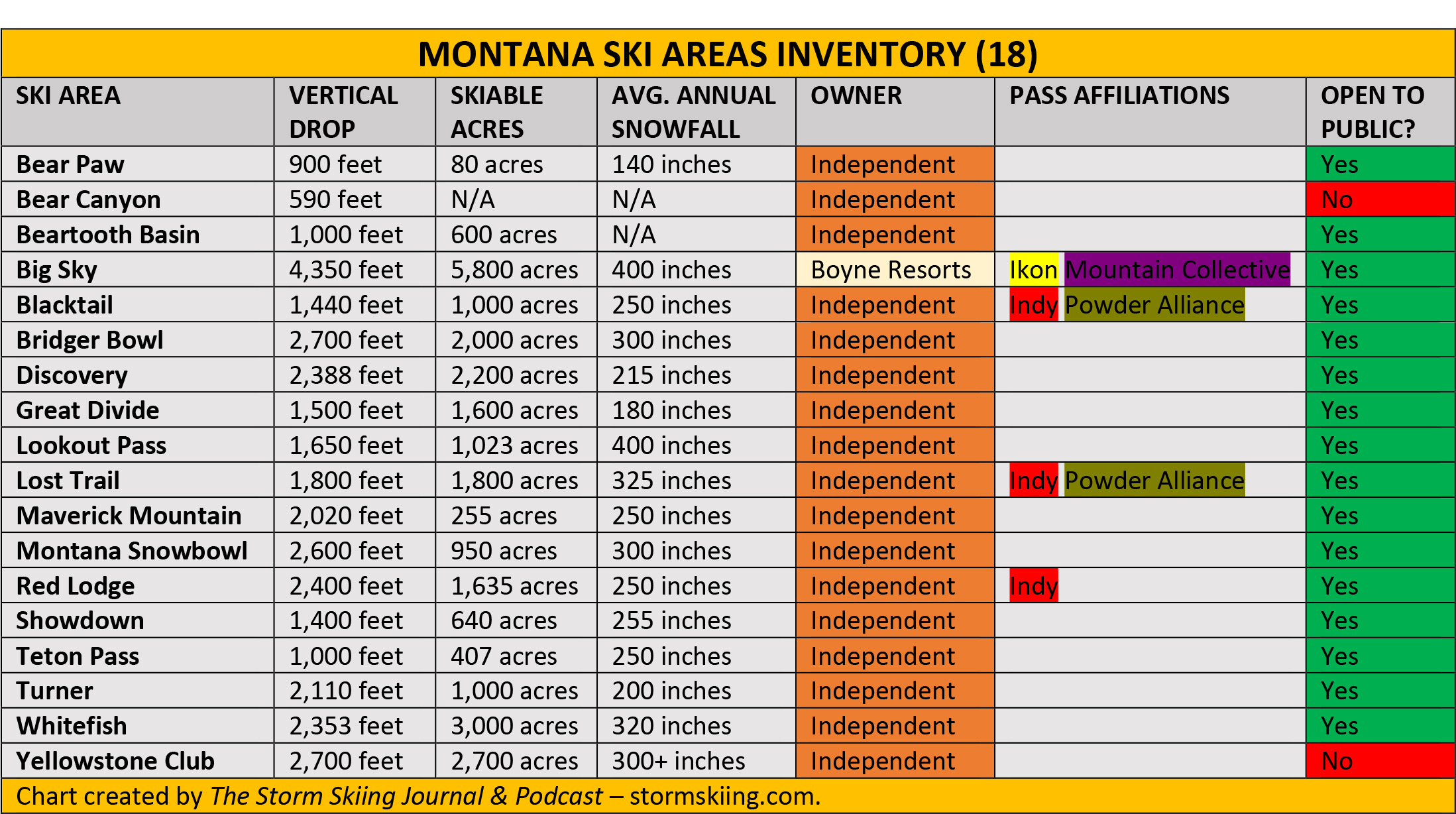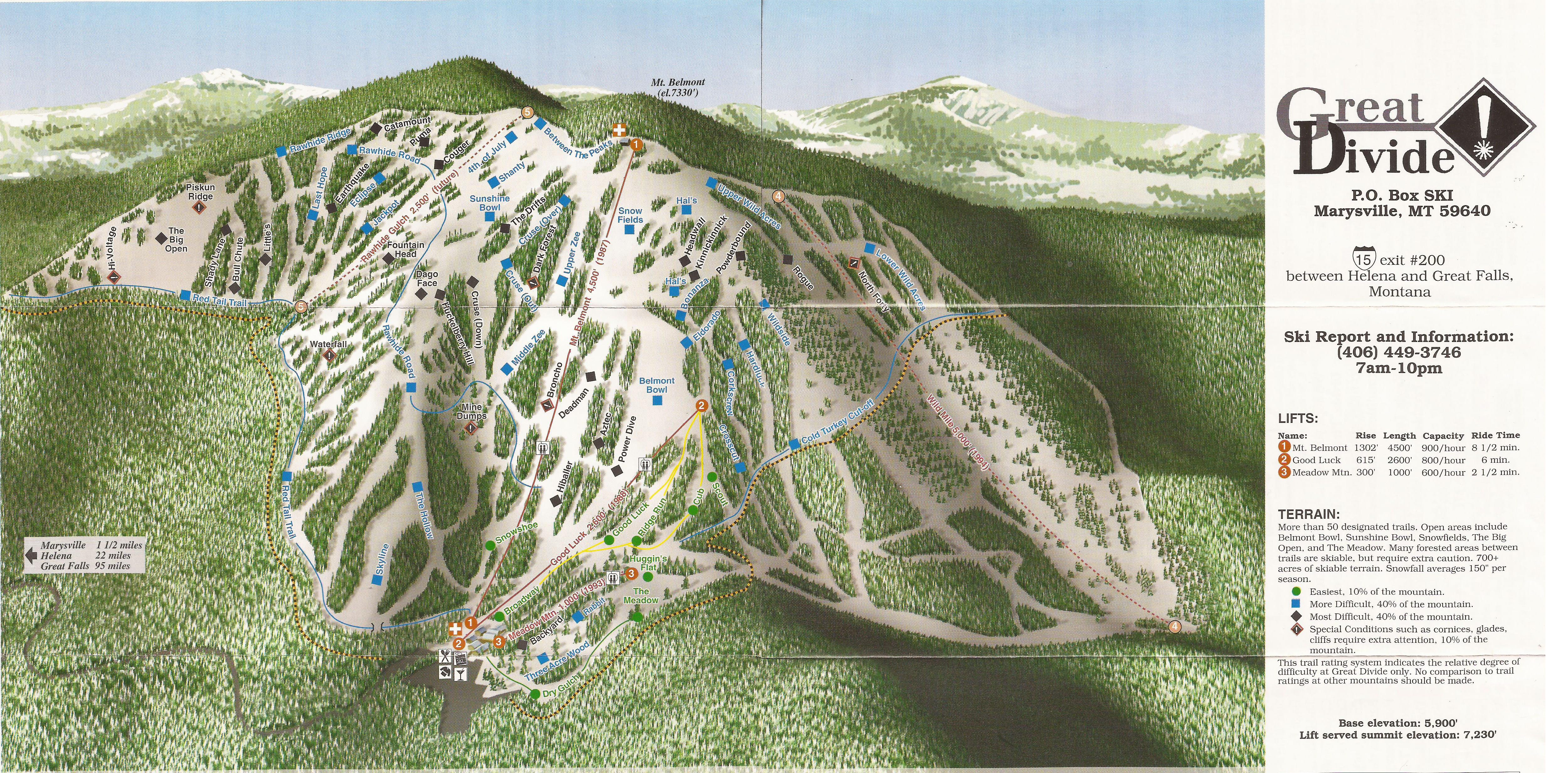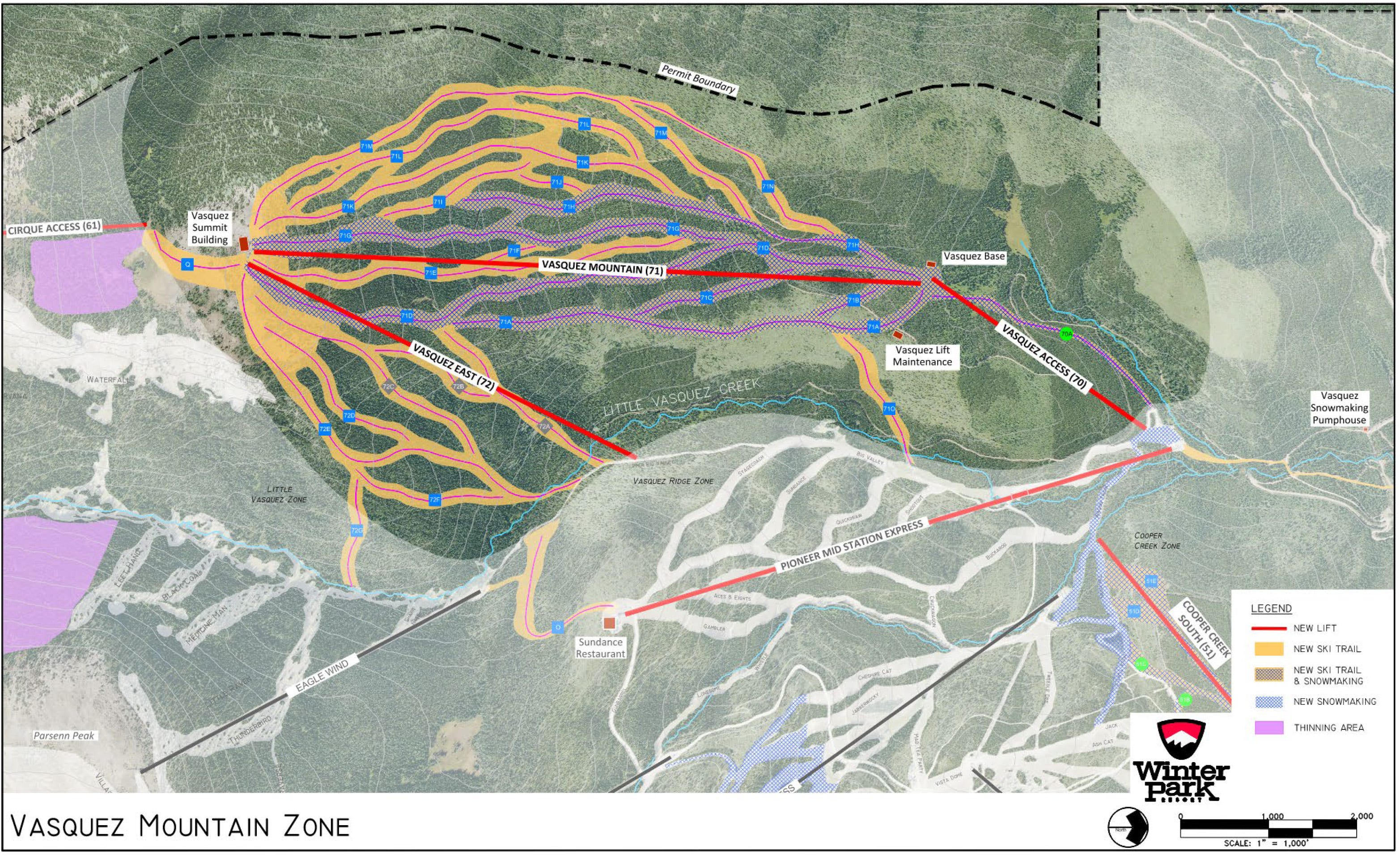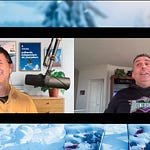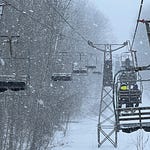Who
Travis Crawford, Co-Owner and General Manager of Great Divide, Montana
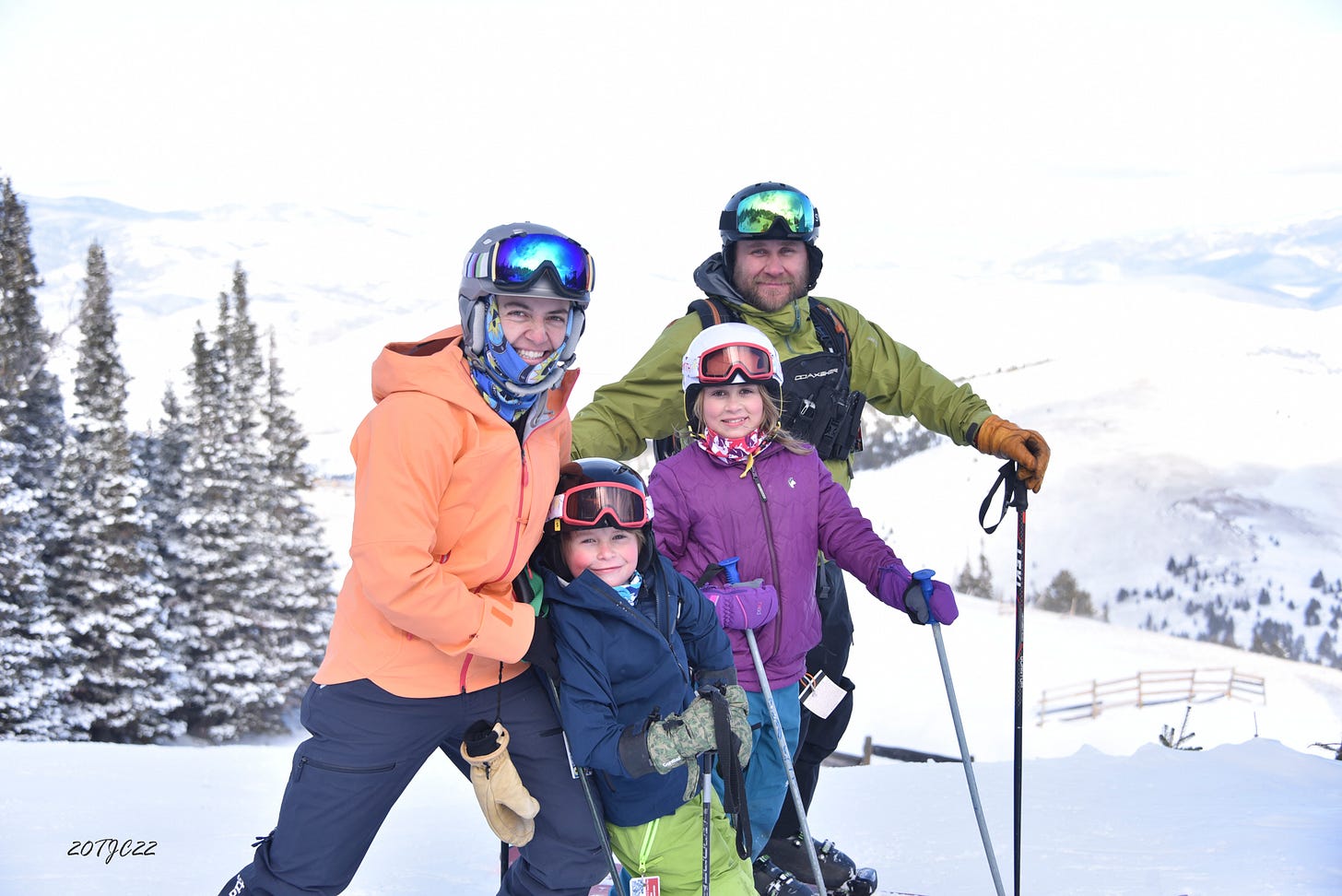
Recorded on
July 17, 2023
About Great Divide
Click here for a mountain stats overview
Owned by: Betsy Moran, Shane Moran, Travis Crawford, Rose Crawford
Located in: Marysville, Montana
Year founded: 1941
Pass affiliations: None
Reciprocal partners: 3 days each at Whitefish, Snow King, Mt. Spokane, Bogus Basin, Mount Bohemia, Powderhorn CO, Ski Cooper, Sunlight
Closest neighboring ski areas: Discovery (2:13), Bridger Bowl (2:19), Montana Snowbowl (2:30)
Base elevation: 5,750 feet (at bottom of Wild West)
Summit elevation: 7,250 feet (at top of Belmont chair)
Vertical drop: 1,500 feet
Skiable Acres: 1,500
Average annual snowfall: 150 inches
Trail count: 127 (17% expert, 30% advanced, 47% intermediate, 7% beginner)
Lift count: 6 (5 doubles, 1 ropetow)
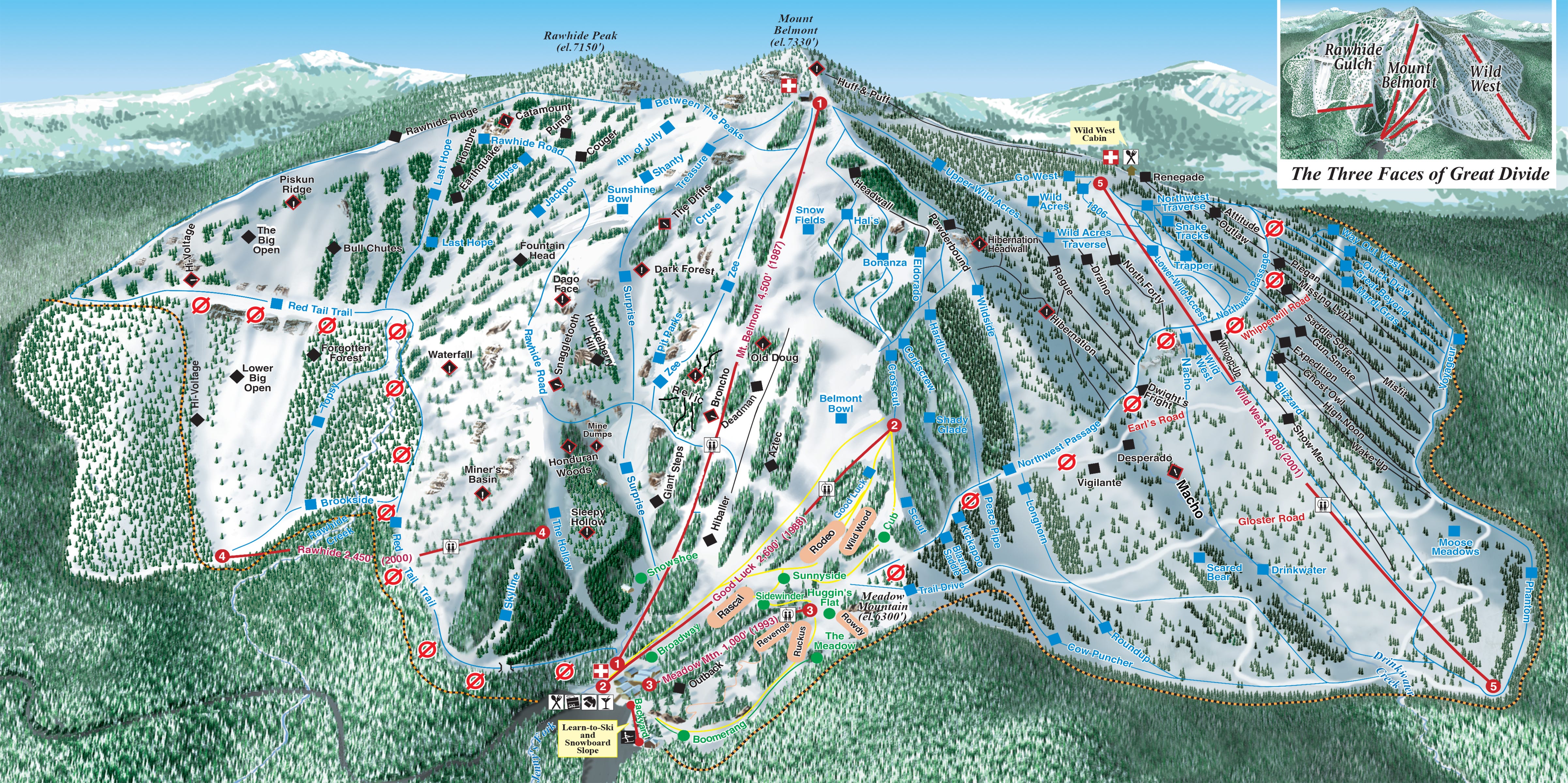
Why I interviewed him
Should we all have a town bump like Great Divide. At the base: sundecks, steps wound between wooden buildings, bunched lifts rising from the parking lot. Centerpole Riblet doubles, those glorious machines. Up the mountain, a vastness. No fuss. Little grooming. Treed meadows hanging off traverses, flouncing down the incline. Up and over ridges. Narrow cuts through the trees. The kind of place, like Snowbird or Palisades, where runs meld together across broad faces. But without the extreme steepness of those alphas. But enough, pitched just so, a captivating kingdom begging for exploration.
There’s a homey appeal to a ropetow bump or a Midwestern 300-footer. Like a small-town gas station or a grocer or, as we call convenience stores in Michigan, a “party store.” Hey Fella, we see you there. Welcome. You’re part of it. Thanks for it. See ya next time. That’s why these places build skiers faster than ants raise pyramids of dirt in your driveway. That sort of casual inclusion invites immersion.
It can be tricky to even imagine how such back-slapping could translate to any ski area so large that you can’t see the whole thing from the parking lot. Actually achieving it is damn near impossible. Step into the frantic base at Park City or Steamboat or Big Sky or Snowbird and you immediately feel lost in the scale of it, surrounded by tens of millions of dollars worth of high-speed lifts telling you to get the hell out of there as fast as possible. Downhome has a tough time snagging shotgun on a vehicle made to transport 20,000 skiers per day.
Great Divide occupies a rare and special place in American skiing: big terrain, tight community. That town-bump energy distilled, preserved, guarded, a launchpad to the rambling terrain above. Montana, of course, is filled with such places: Bridger Bowl and Lost Trail and Maverick and Discovery and Montana Snowbowl and Red Lodge and Turner. Ski areas with the vert and acreage to be monsters, but with the humble lifts and base buildings that communicate the real-life fact of a snowy town square.
It is impossible not to love this place. Detach Bro may grumble about the fleet of Riblet doubles. Powder Bro will remind you that Great Divide’s 150 annual inches of snowfall is barely a passable week in Little Cottonwood Canyon. Corduroy Bro will wish for more top-to-bottom groomers. But unless your soul has been wrenched from your body by one too many cable news benders, the totality of this place will resonate with you, and leave you full long after you’ve driven back down the mountain.
What we talked about
Why Great Divide’s skier visits keep going up every year; Great Divide’s first-to-open, last-to-close tradition; the art of summertime slope maintenance; how Great Divide manages on just 150 inches per year; the methodical evolution of the ski area; buying the ski area you grew up at; what it means to be a community ski area; the pressure of carrying on a legacy; raising your kids on the mountain; the ownership group that Crawford purchased the ski area with in 2020; the Covid shutdowns and the aftermath; #Goals; modifying centerpole Riblets for MTB operations; Great Divide has two full Riblet lifts sitting in its boneyard – where should they go?; potential expansion; why Great Divide never built the Rawhide Gulch lift that appeared as future construction on old trailmaps; operating a ski area on Bureau of Land Management land and how that differs from operating on U.S. Forest Service land; potential Belmont lift upgrades; how an upgrade to the Wild West lift will allow it to spin faster; a potential new transfer lift; considering a carpet for the beginner area; the history of the unique Rawhide lift; yes, you can outfit centerpole Riblets with safety bars; retrofitting the rest of Great Divide’s lift fleet with bars; why the mountain’s official trail count has shrunk over the years; the ravages of the pine beetle; fire mitigation; don’t ski into that mineshaft; snowmaking and water issues; potential parking additions; a potential new baselodge; Great Divide’s $350 early-bird season pass deal and whether they will be able to hold that price; Great Divide’s extensive reciprocal lift ticket deals; and the Indy Pass.
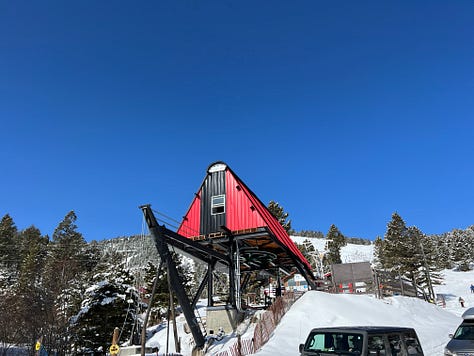
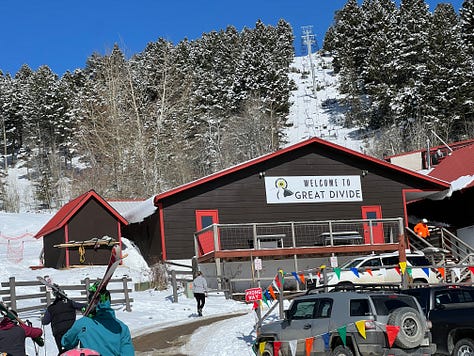
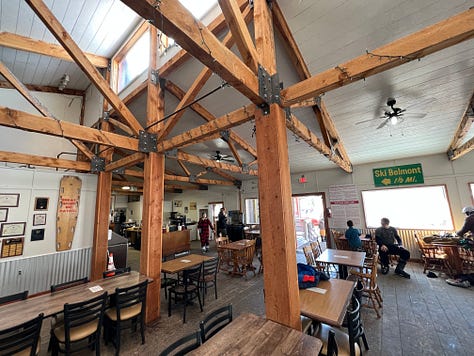
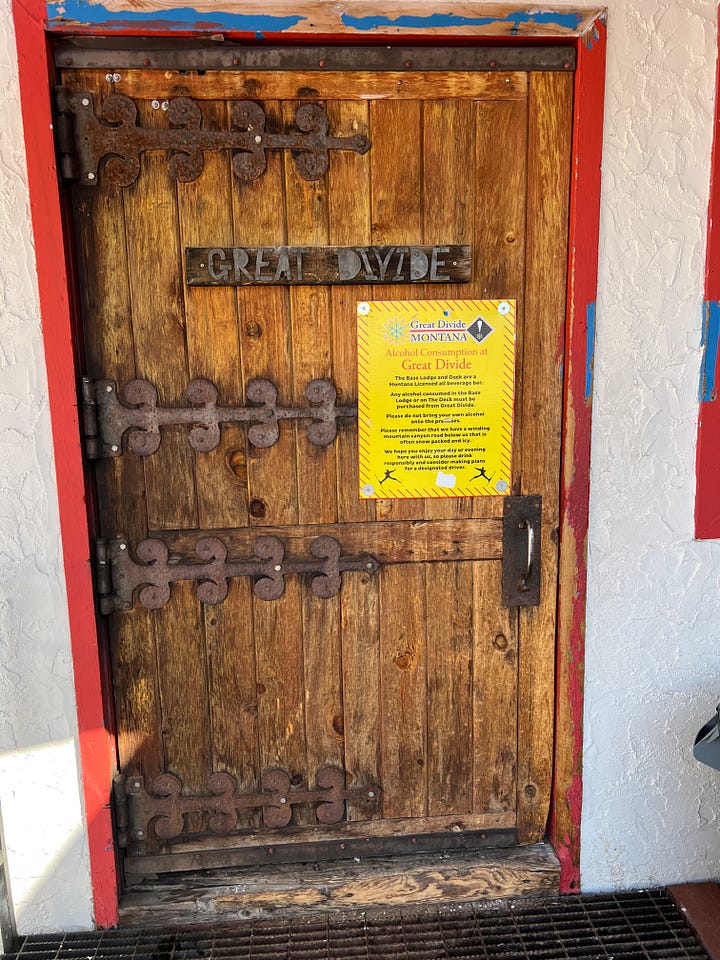
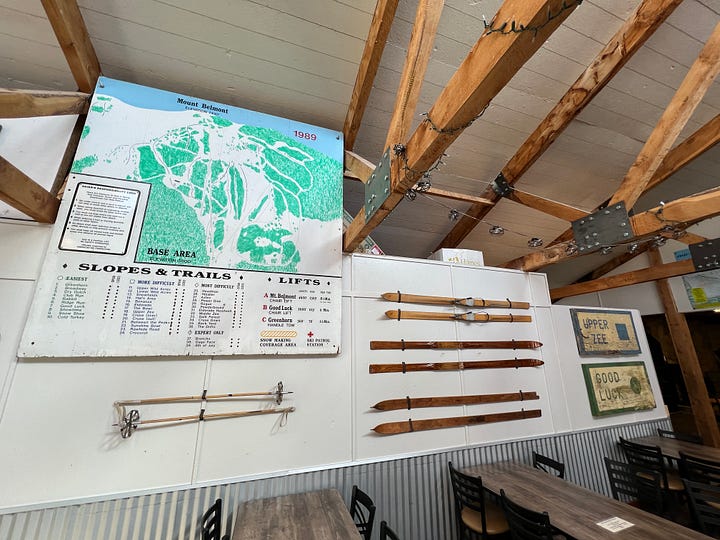
Why I thought that now was a good time for this interview
In January 2020, Crawford, along with his wife Rose and Betsy and Shane Moran, bought Great Divide from its longtime owners, Kevin and Nyla Taylor. Less than two months later, the world collapsed. Or so it seemed in the moment. And now they owned a ski area, which I guess at the moment probably felt like owning the wagon factory next door to the Model T plant.
Three years later, Great Divide just set a record for skier visits for the second consecutive season. The place is working. The Taylors’ legacy is secure. Over 35 years, they’d transformed the mountain from a T-bar joint run by a local ski club to the 48th-largest ski area in America. They’d entrusted their life’s work to an ownership group that included their daughter, Betsy. Great Divide had survived Covid. Now what?
As much as the Taylors achieved, Great Divide is still incredibly raw. The potential to add lifts and terrain is vast. The mountain could use a bigger baselodge, more parking, better snowmaking. Crawford and I discuss all of this. He has ideas. Many will happen. Actualizing each project is a matter of capital, permitting, planning, timing: a new Belmont lift, deeper water rights, an expansion off Rawhide Gulch. Great Divide will not stand still.
The question, of course, is how the ski area evolves without shedding its community ethos, its approachability and neighborly gleam. That balance, so hard to attain, is so easy to lose. But Crawford is well-positioned to achieve it. He lives, with his wife and two young kids, on the mountain. His 8-year-old son, he tells us, wakes up on Saturday morning, walks down to the lodge, gears up, and bombs the mountain alone all day long. Spoiling that atmosphere of howdy-get-along would be like tilling up your lawn and planting weeds. He just won’t do it.
What I got wrong
Embarrassingly, I kept calling the Taylors the “Naylors.” I don’t know why. My apologies to Kevin and Nyla Taylor.
I kept pronouncing “Helena,” as “Heh-Lain-Ah,” which is how I’d pronounced it since I was like zero years old. But talking to Crawford and other locals made me realize that the correct pronunciation is, “Heh-Leh-Nah.” But everyplace has its micro-regional place-name pronunciations that are impenetrable to outsiders. Have fun with “Muskegon,” “Swartz Creek,” “Frankenmuth,” “Clio,” “Pinconning,” “Roscommon,” “Mackinac,” and “Epoufette” if you’re not from Michigan.
Why you should ski Great Divide
Let’s start here: a full-day adult lift ticket for the 2022-23 ski season was $64. That’s four cents an acre. Not a bad conversion rate, and worthwhile even if you already have a multi-mountain pass or two tucked in your jacket pocket. And the joint is incredibly easy to get to (well, once you get to the middle of Montana), seated just eight miles off Interstate 15. So situated, Great Divide is a terrific decompression zone as you travel between Whitefish and Big Sky.
But go out of your way to get here if you must. The terrain is incredibly fun. Great Divide is not an extreme mountain or an especially snowy mountain, but it is an interesting one, with an appealing balance of semi-technical lines, glades, groomers, and de-stumped meadows that you can bomb with little concern for sharks.
Epic and Ikon Pass sales continue to climb. And no wonder why – these are astonishing bargains, punchcards to deep resort rosters that can satisfy any type of skier. This breadth and ease of access is good for skiing. But the passes’ popularity likely drives ever-more skiers to a relatively stable number of resorts, fundamentally transforming the experience of skiing the big-mountain West. But there are hacks, a sub-circuit of ski areas that are marketed primarily to locals but deliver terrain and vert that is comparable to – and far emptier than – the better-known ski areas headlining the big passes. Great Divide is one of them. Go get it.
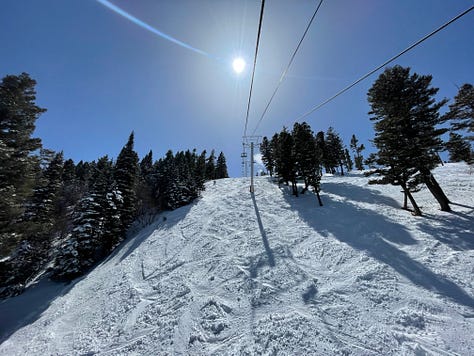
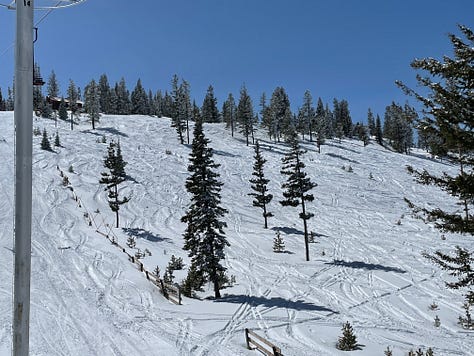
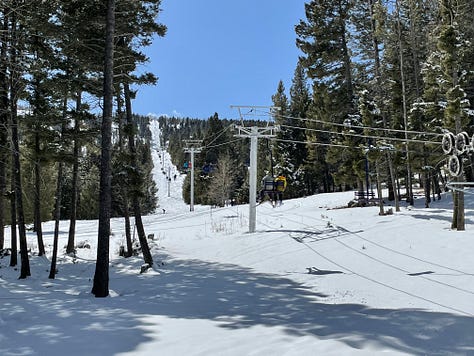
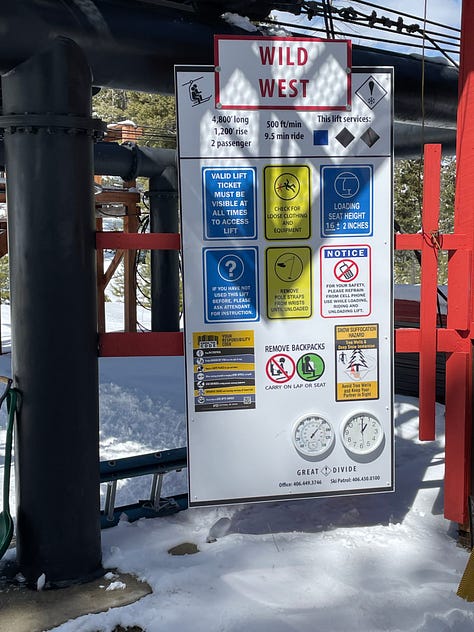
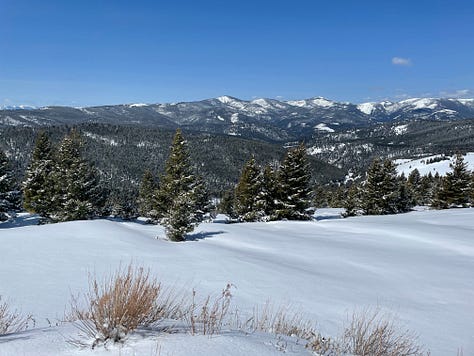
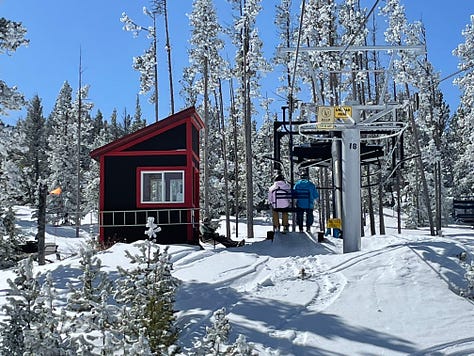
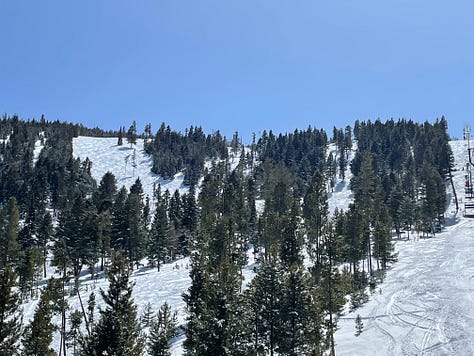
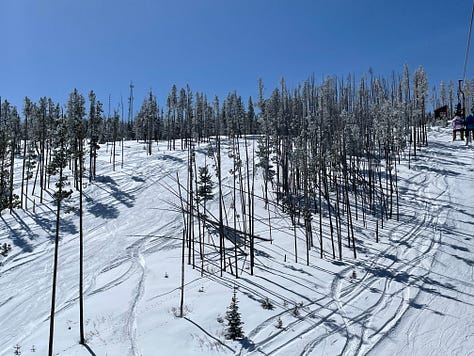
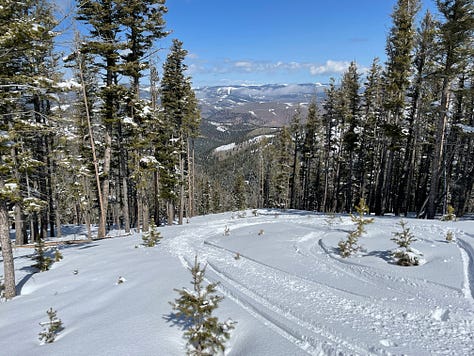
Podcast Notes
On Montana’s large and underrated ski areas
Montana is the fourth-largest U.S. state by area, after Alaska, Texas, and California, but it’s home to just 18 alpine ski areas. They may be among the most underrated collection of ski areas in America, however: 12 cover 950 or more acres, and several clock an average annual snowfall of 300 inches or more.
On the old proposed Rawhide Gulch lift
Crawford and I briefly discuss a proposed-but-never-built lift that would have run up Rawhide Gulch – you can see that on the left hand side of this circa 1993 trailmap, between Jackpot and 4th of July:
On the peak that Winter Park will develop
I referred to a peak that lay within Winter Park’s Forest Service permit area and was slated for development under the ski area’s most-recent masterplan. That’s Vasquez Ridge, which I broke down in this article last year.
On the safety bar on Great Divide’s centerpole Riblets
The Storm publishes year-round, and guarantees 100 articles per year. This is article 69/100 in 2023, and number 455 since launching on Oct. 13, 2019. Want to send feedback? Reply to this email and I will answer (unless you sound insane, or, more likely, I just get busy). You can also email skiing@substack.com.



